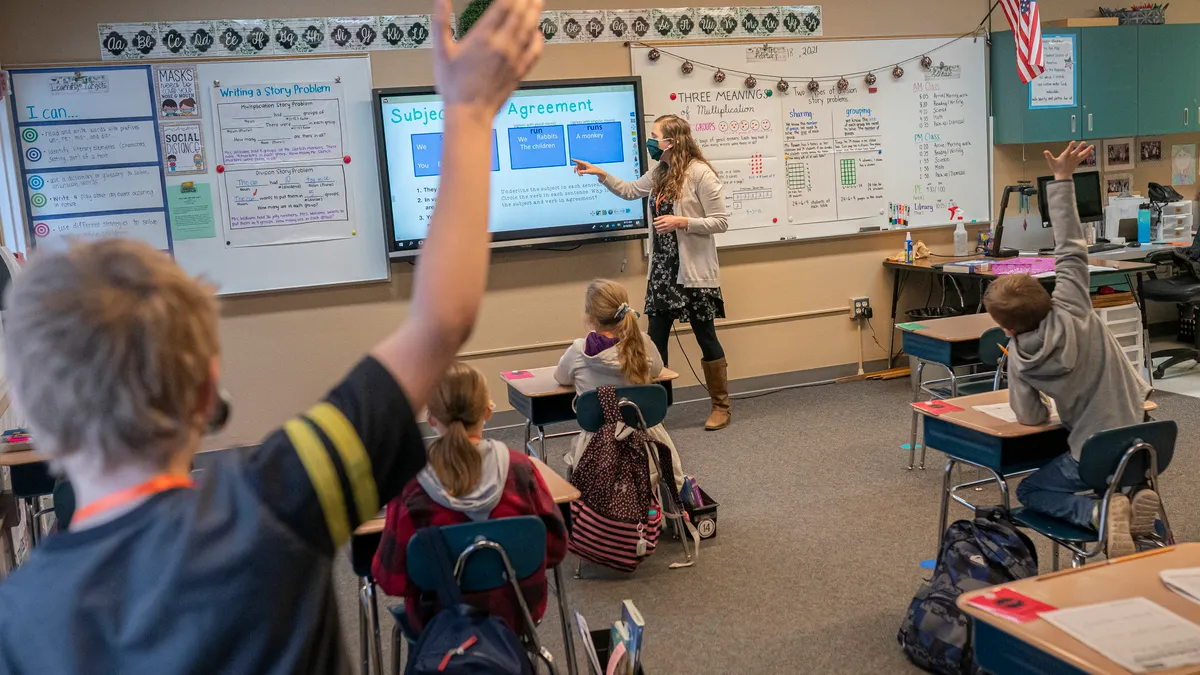Dive Brief:
- Districts that experienced dips in student enrollment during the coronavirus pandemic may be headed toward a rebound, anecdotal evidence and researchers suggest. While many raised alarms that parents were fleeing public schools for charter or private options, enrollment in the latter declined on a national level, said Olivia Rios, associate director of education consulting firm EAB's K-12 division.
- Meanwhile, the number of students in virtual charters and homeschooling increased. "The fact that most students have stayed home instead of leaving public school districts for attractive in-person competitors is reassuring for their return — because staying home long-term won’t be viable for most," Rios said, adding spikes in virtual charter school enrollment are also likely temporary.
- Kevin Brown, executive director of the Texas Association of School Administrators, said in an email he expects a "significant rebound" in the state, especially if there is a juvenile vaccine, based on anecdotal information. Rios, who conducts research for school districts and independent schools, also said districts are confident enrollment will return to near pre-pandemic levels this fall based on internal research and family surveys.
Dive Insight:
Enrollment dips were especially pronounced for districts that stayed closed longer and for students in the earlier grades, especially kindergarten, Robin Lake, an education researcher and director for the Center on Reinventing Public Education, a nonpartisan think tank, said in an email. As in previous years, most families who redshirt their children will eventually send them to public school, Rios predicted, as keeping them home for several years will be unsustainable and eventually illegal.
And while there are some instances where districts have seen students fall off the grid, districts do know in most cases where students have gone, Rios said. "This information reveals how students have been educated and who is missing from schools this year to further substantiate confidence they’ll return."
National data gives a rough picture. According to a series of May surveys conducted by Civis Analytics, a data science software provider and consultancy that routinely tracks COVID-19 impact, 29% of 2,324 parent respondents reported having disenrolled their children from their intended public school due to reopening decisions.
Of that 29%, 42.6% said they chose an online program, 29% chose to homeschool, and 22% enrolled in another public school. Only 14% chose charters, and 19% chose private schools.
Of parents who have pulled their children from public school, 82% have said they have plans to re-enroll once it is safe to do so.
"Long-term we expect enrollment rates to bump back up, however many families report they do not wish to return to their pre-pandemic choice, at least right way," Lake said, adding this is more often the case for families of color, low-income families and families who don't feel safe to return. "Fear of the virus and lack of trust play into their decisions, but some prefer their new school or homeschool co-op or whatever their choice."
Where they can, districts are offering parents and students choice in their return to school, including shifting to non-traditional schedules and offering continued remote or hybrid learning. A recent poll conducted by the National Parents Union showing parents want to be provided learning options suggests superintendents are headed in the right direction in making those decisions.
"I expect districts will have to work hard to win back some families who left, especially older students," Lake said. "Smart districts are listening to what their community says they want and creating lots of interesting options to woo kids back."













